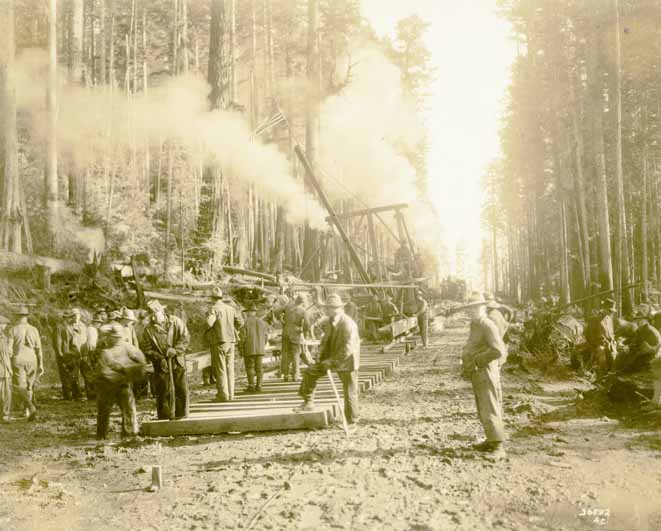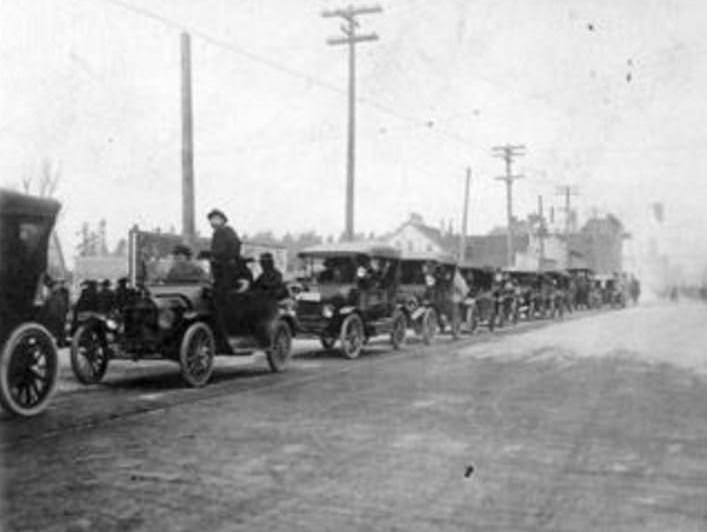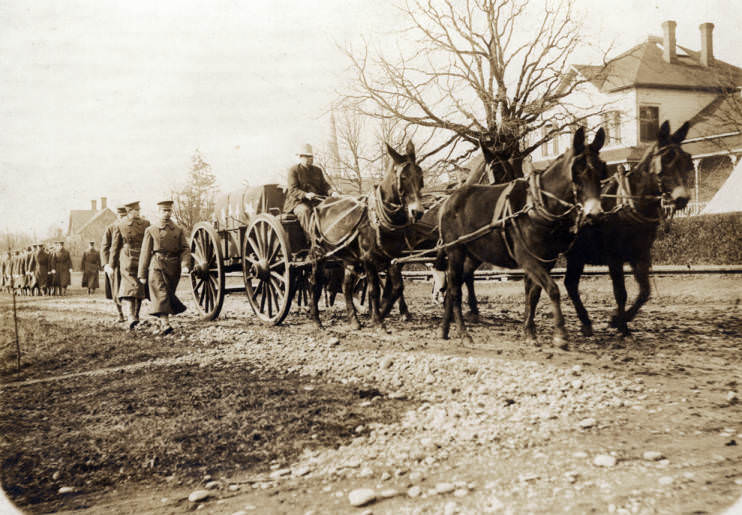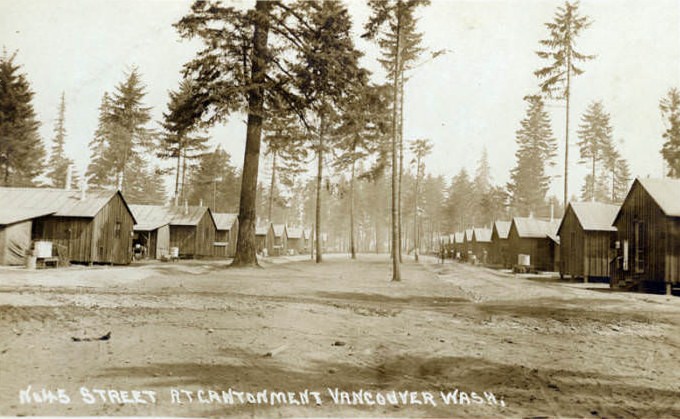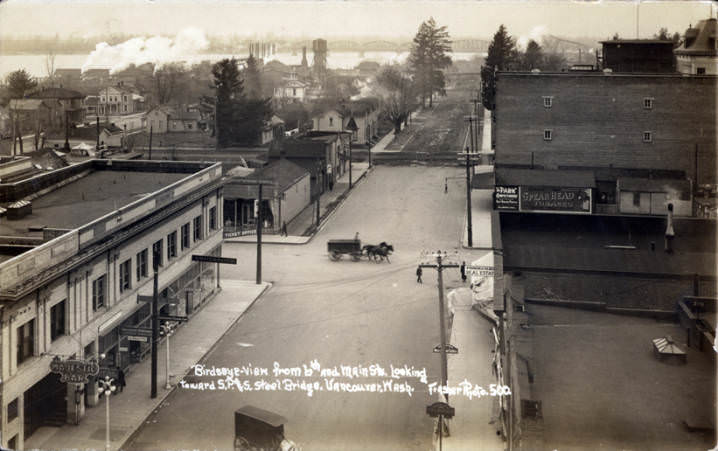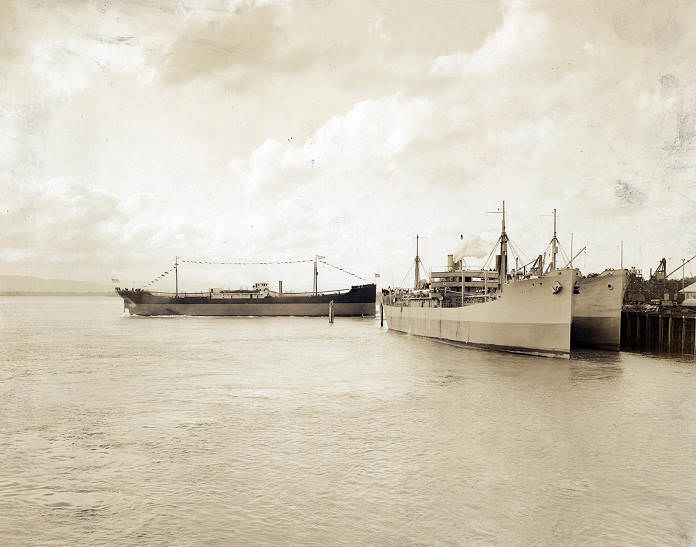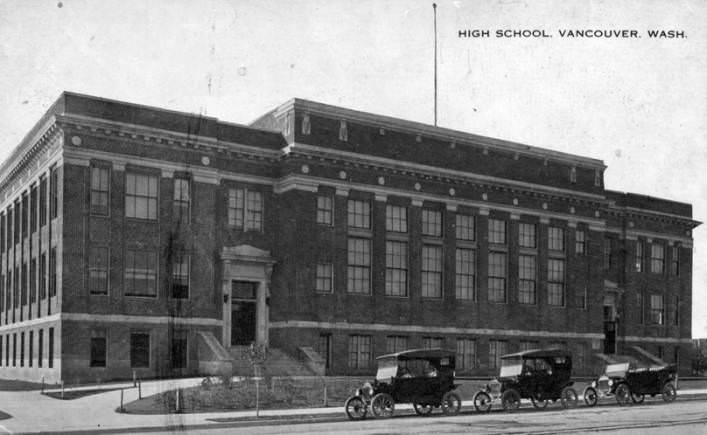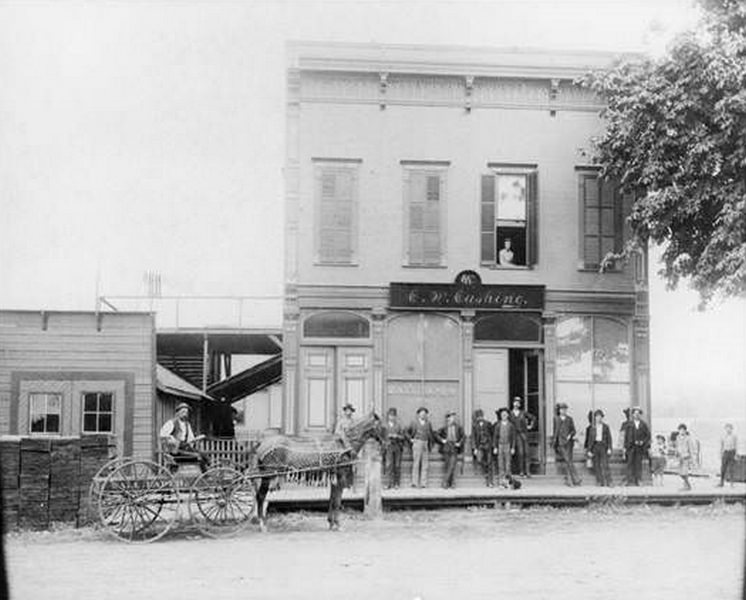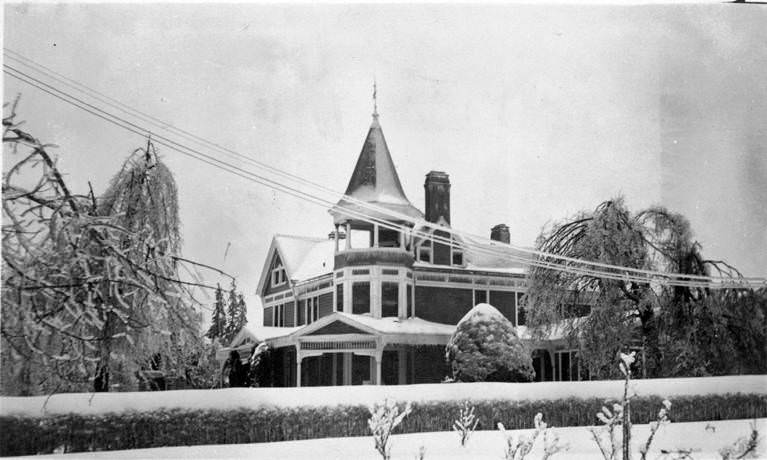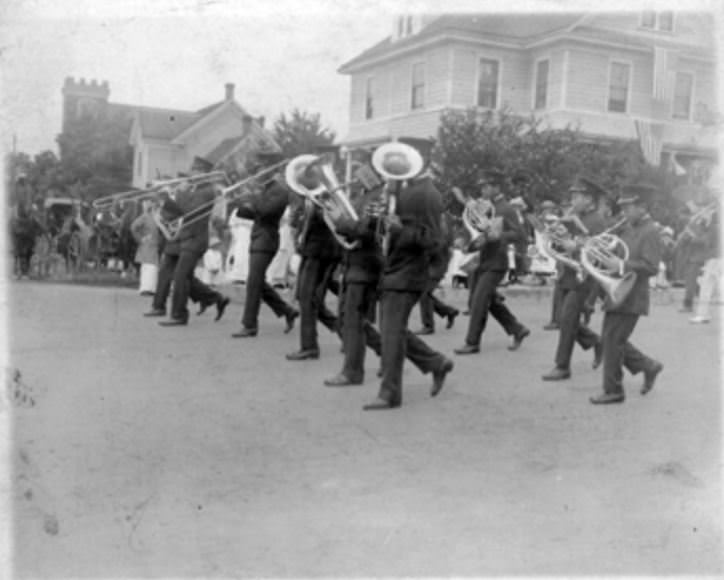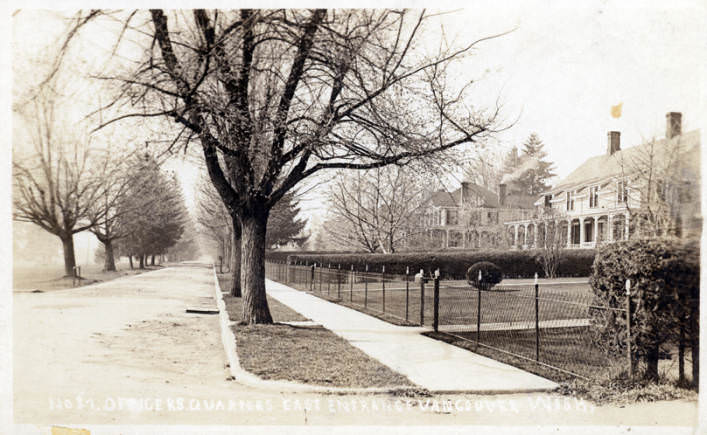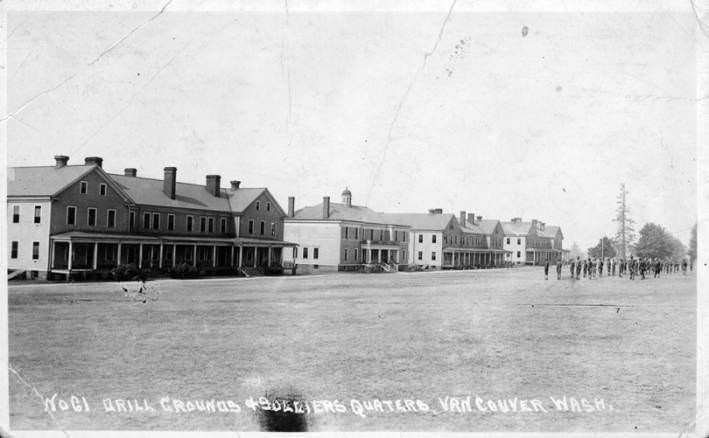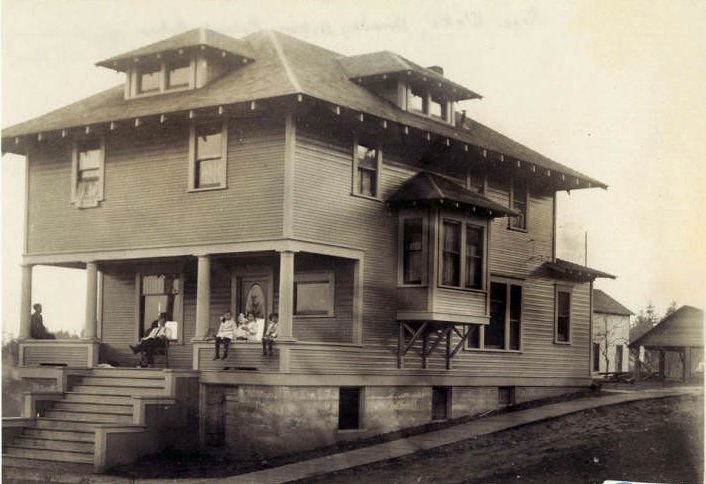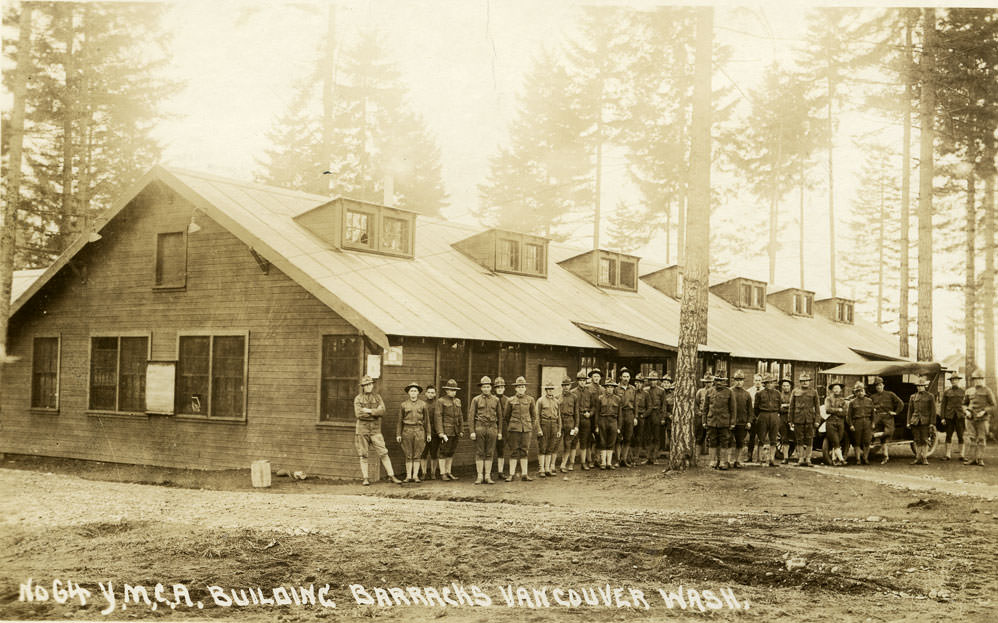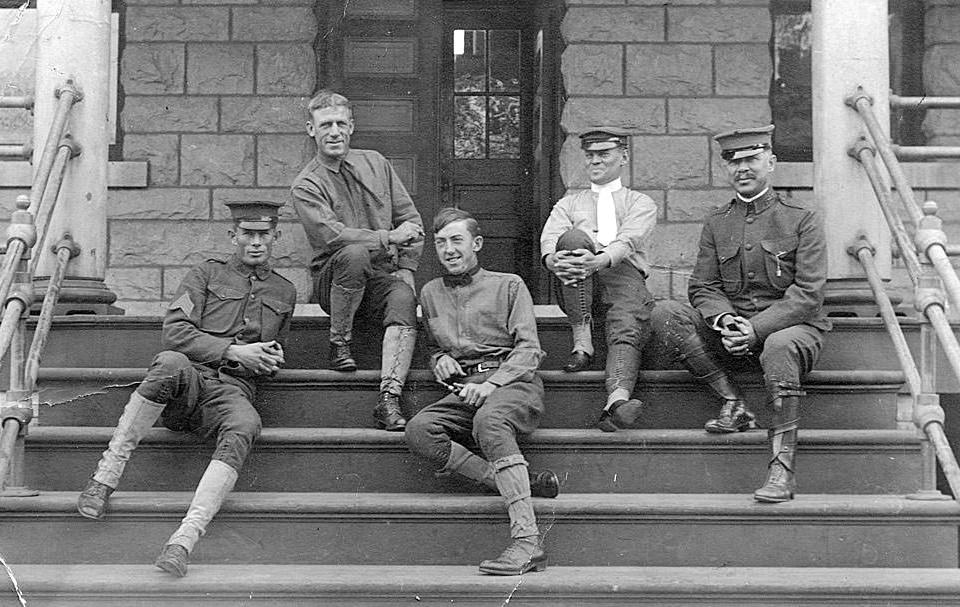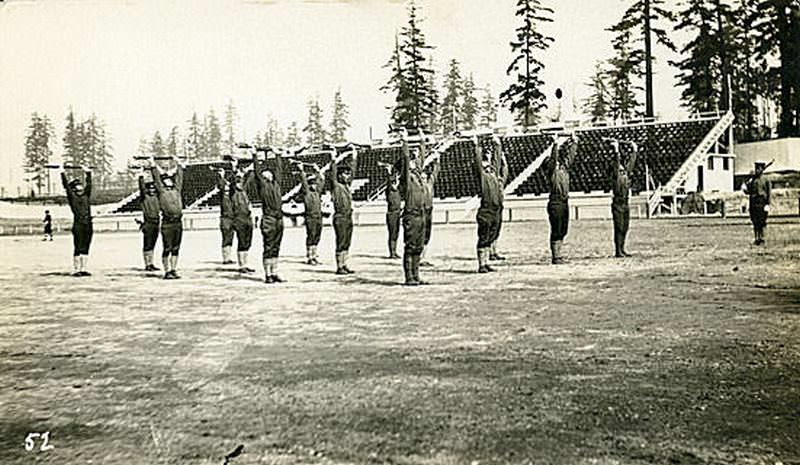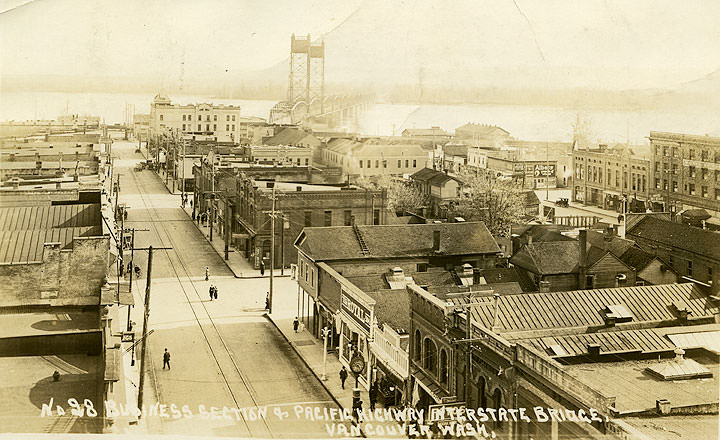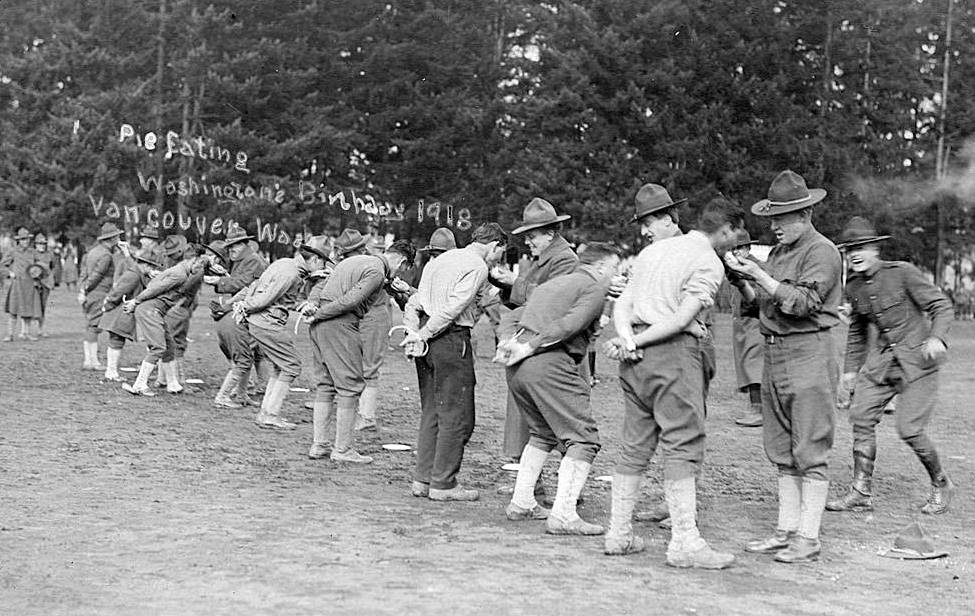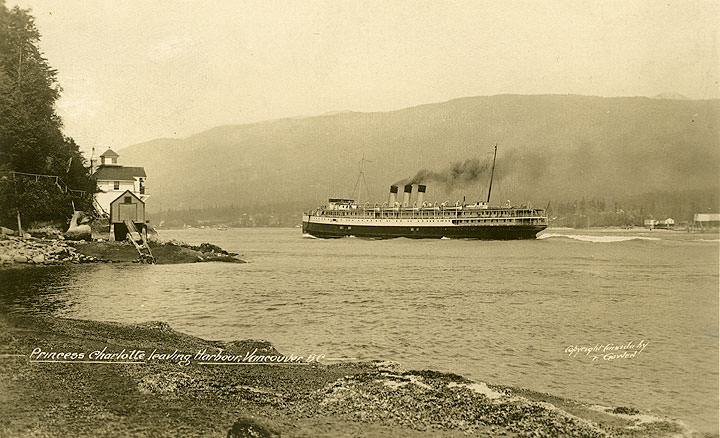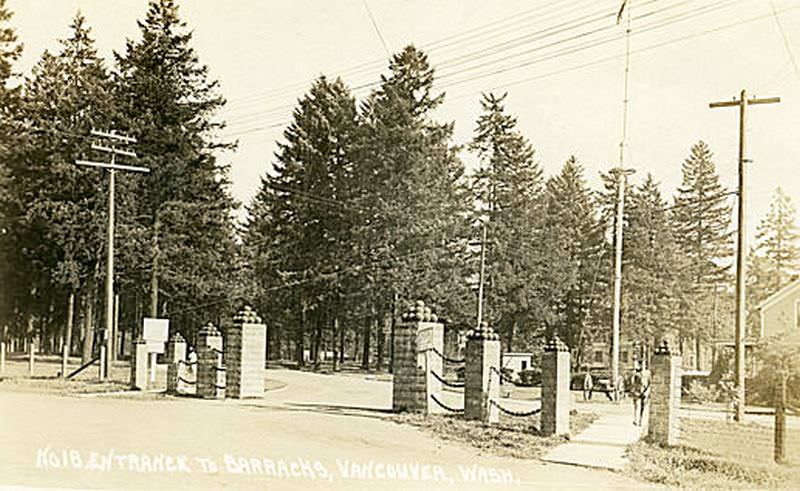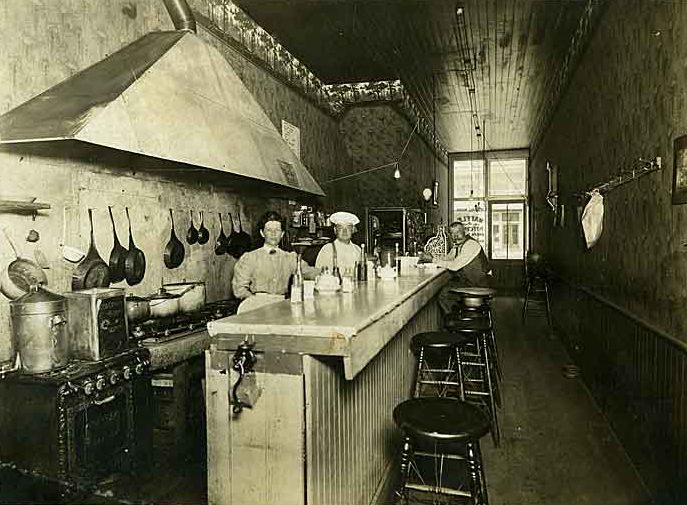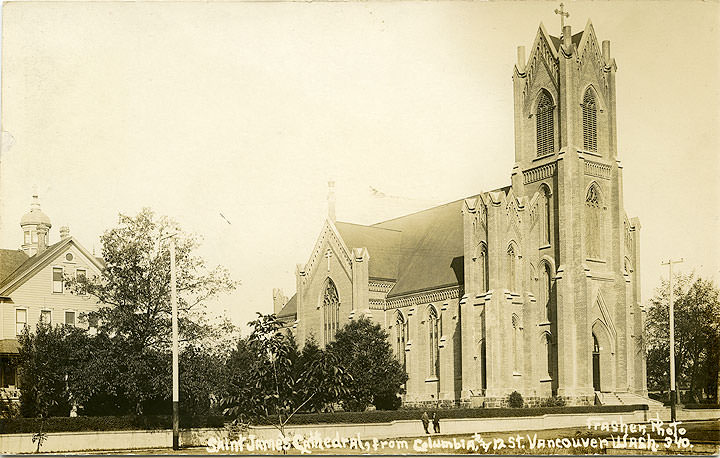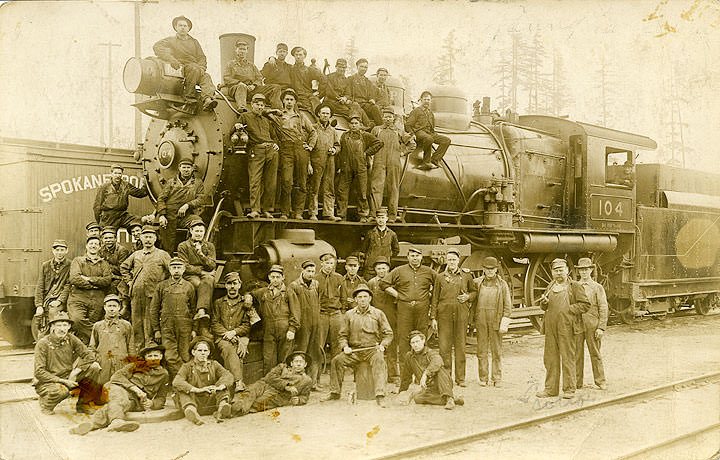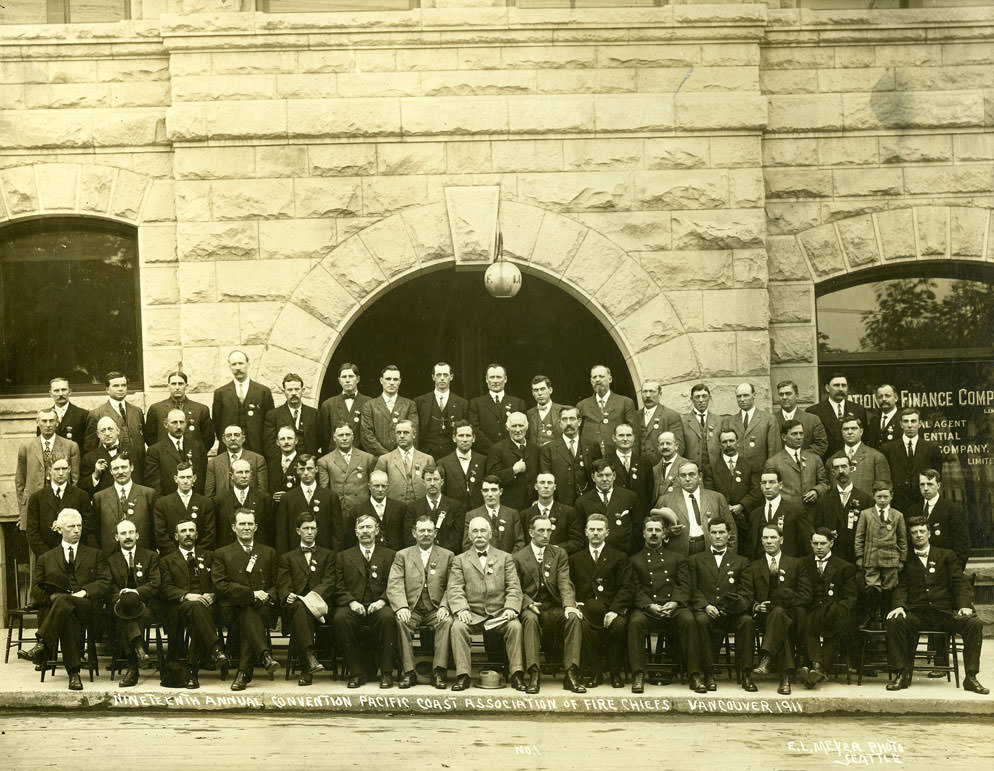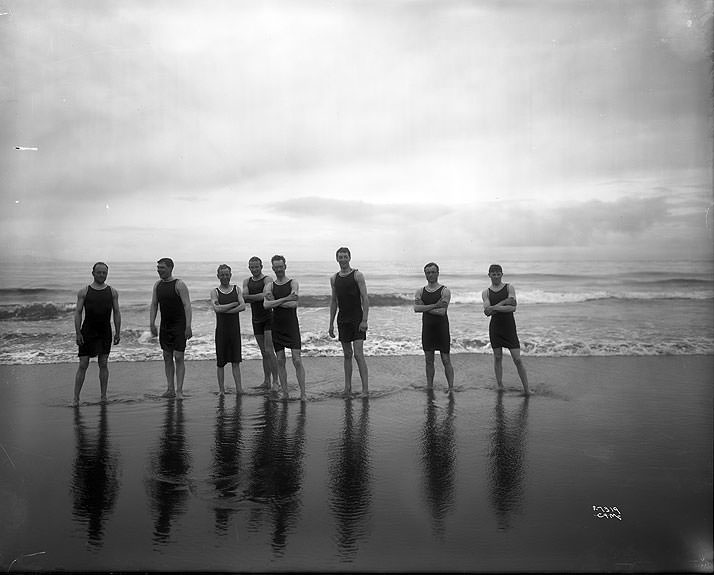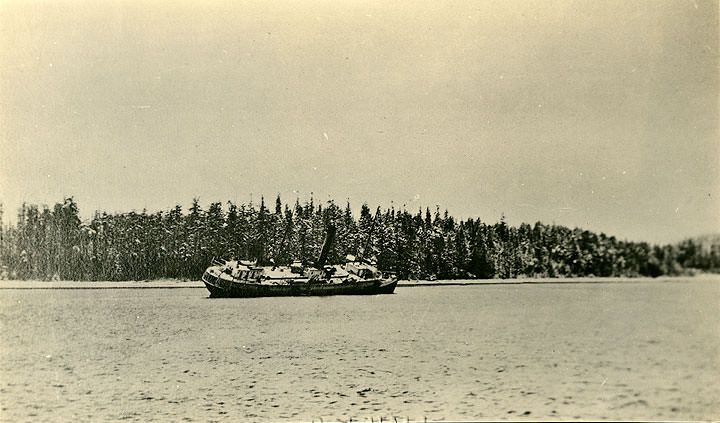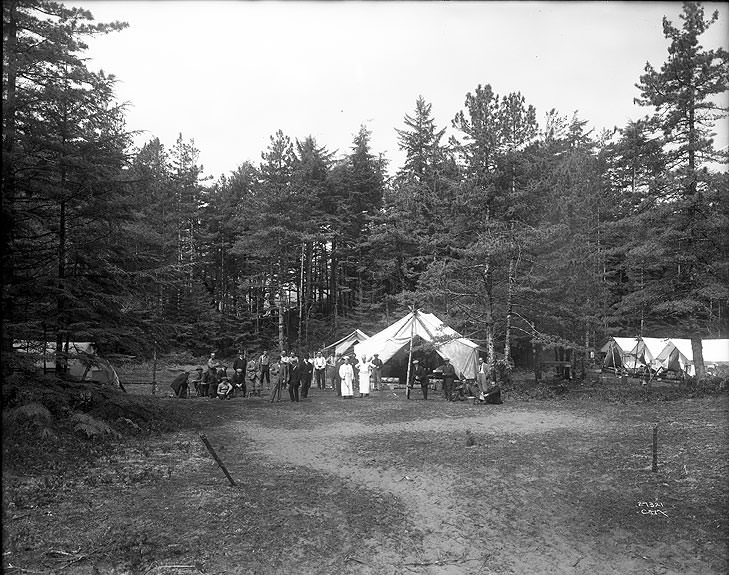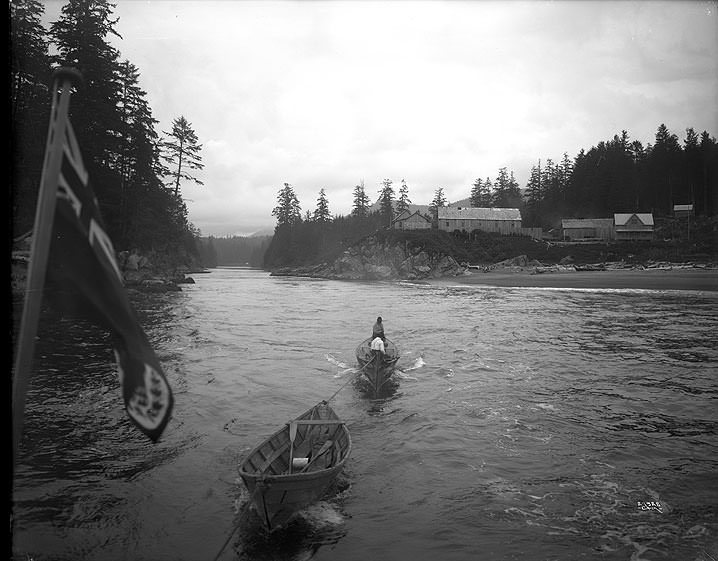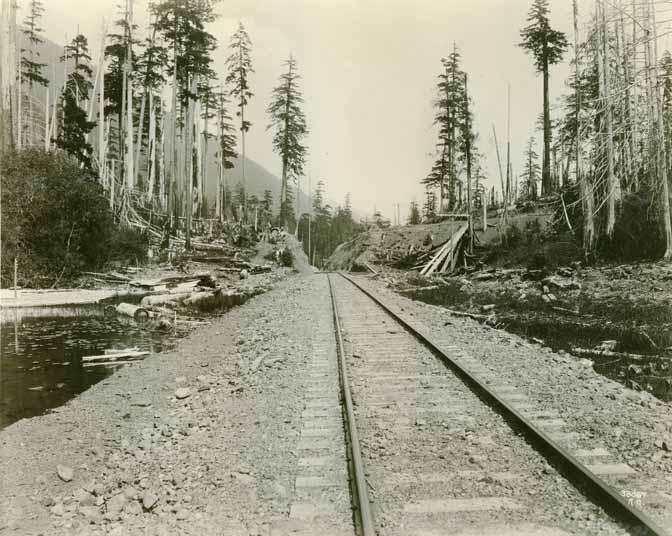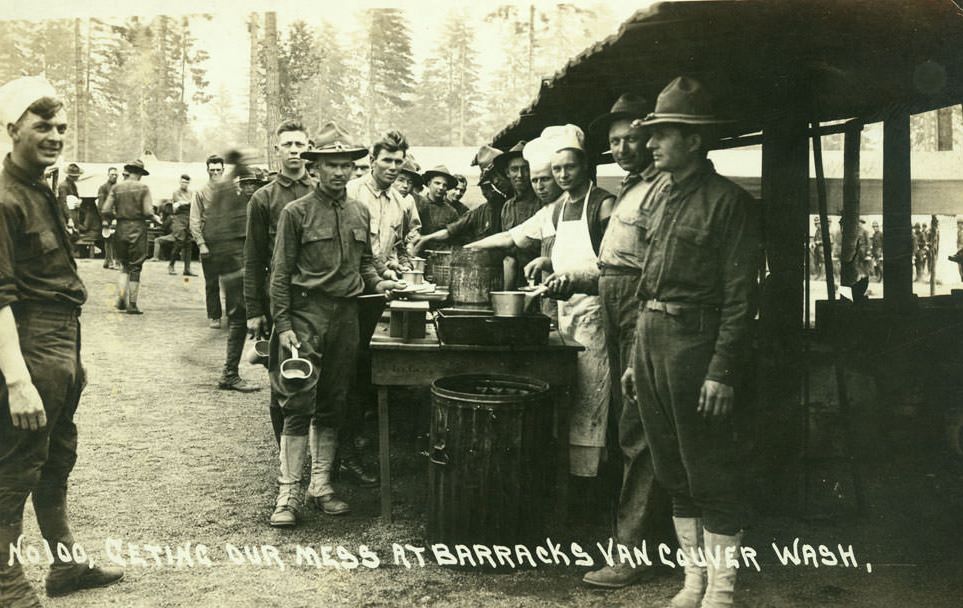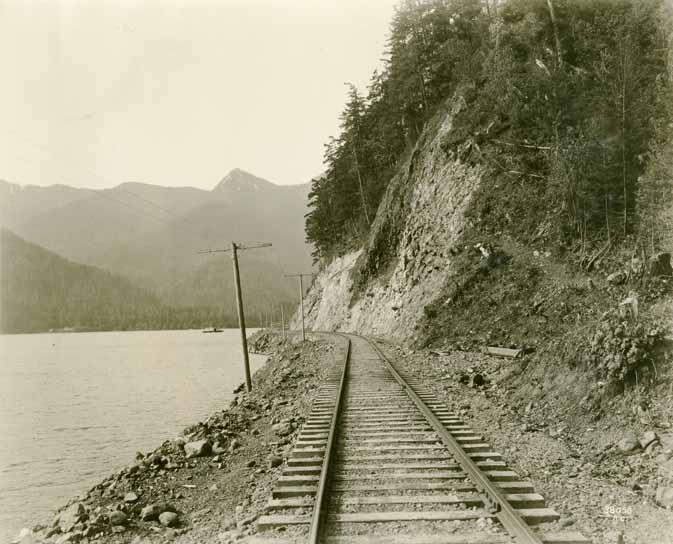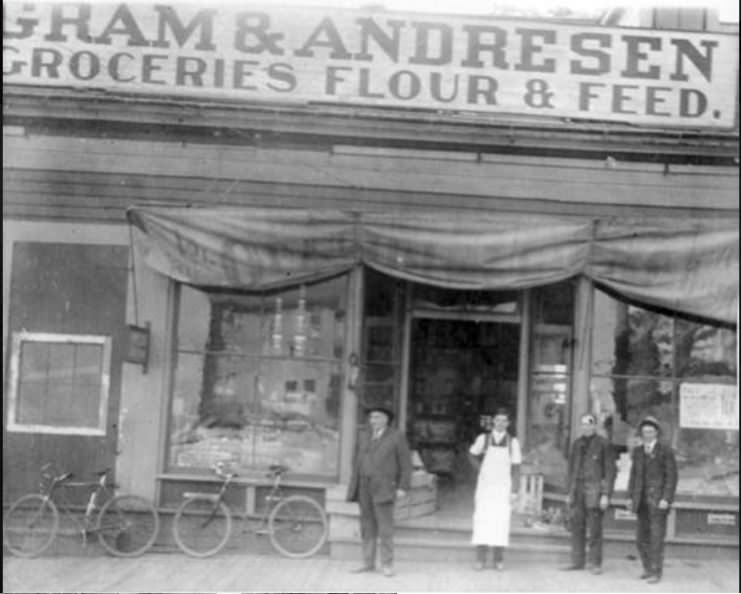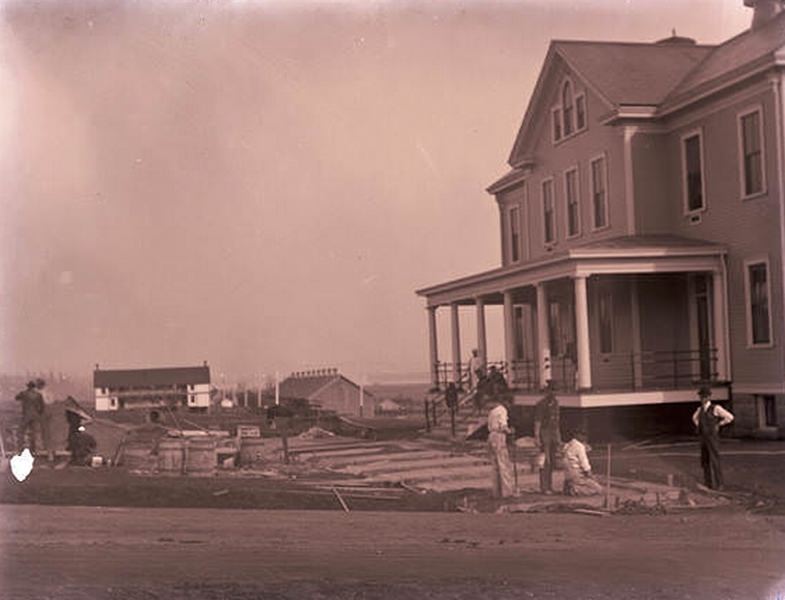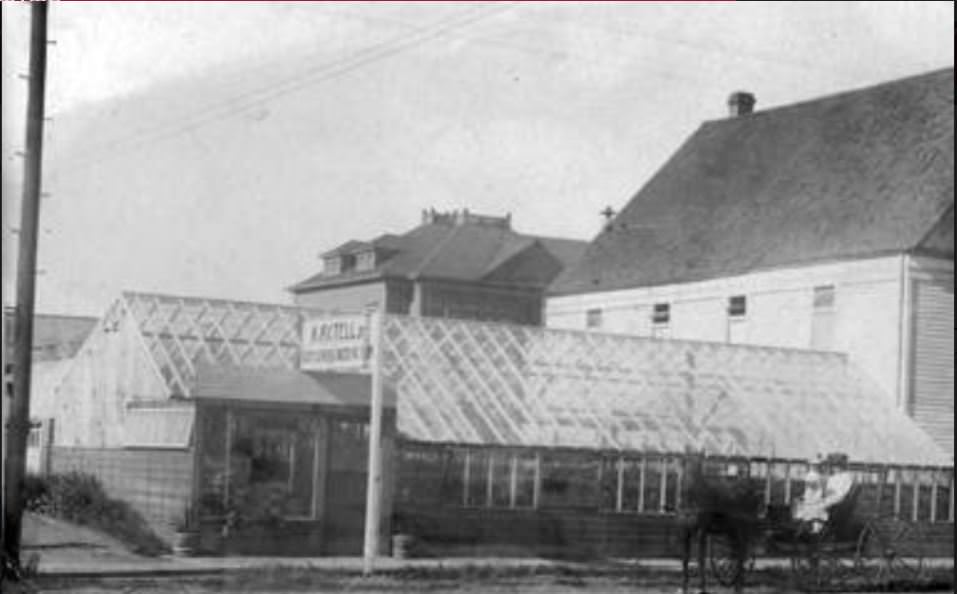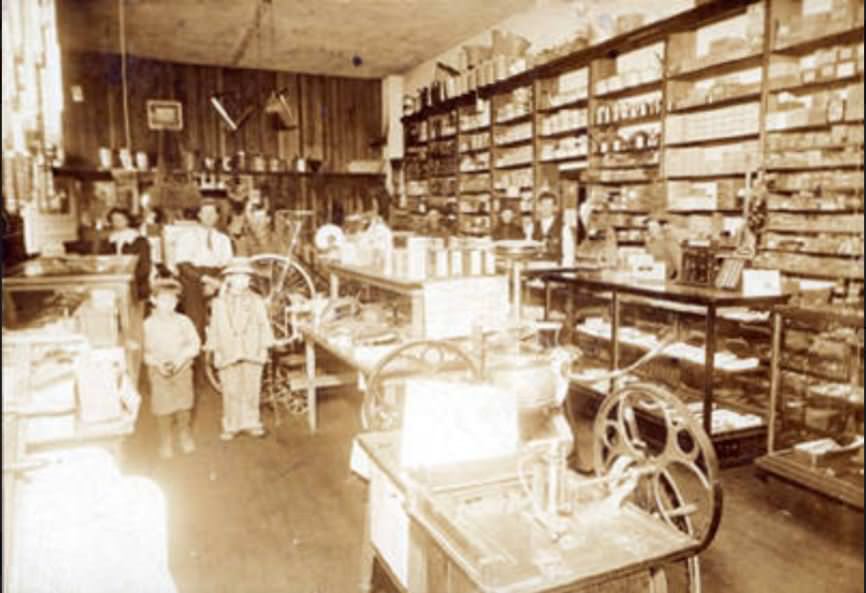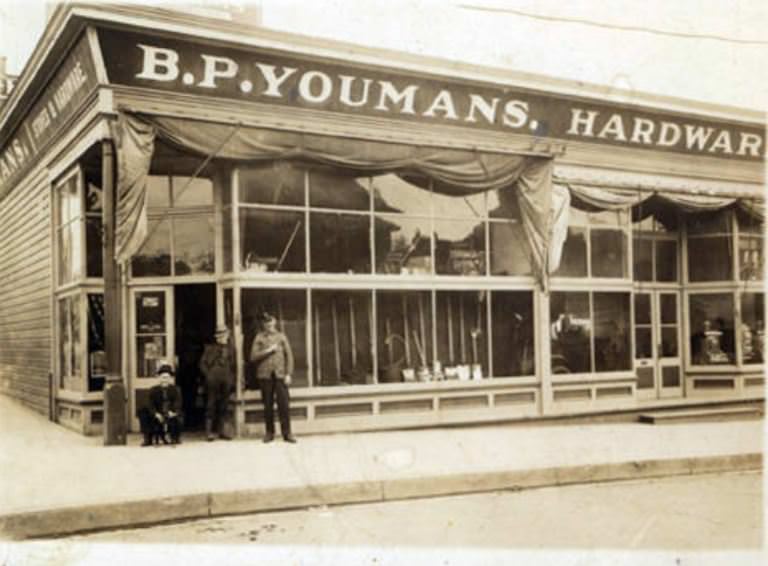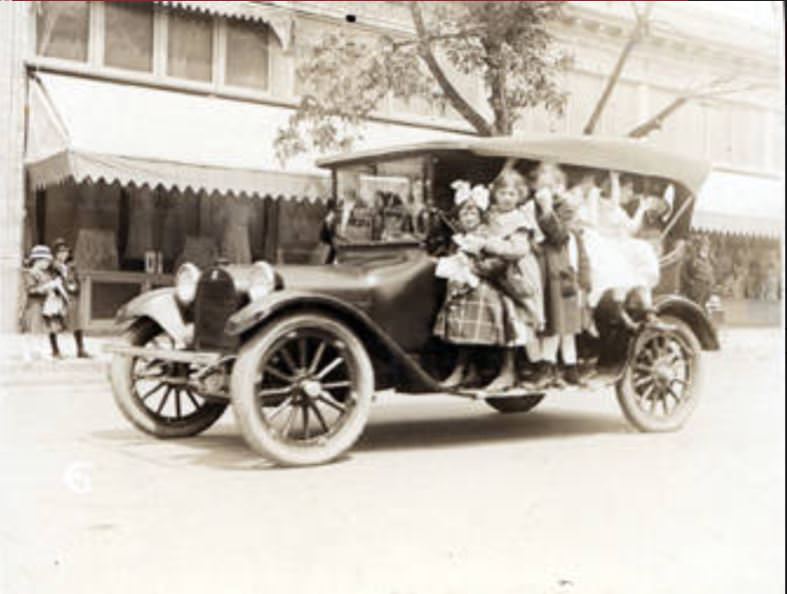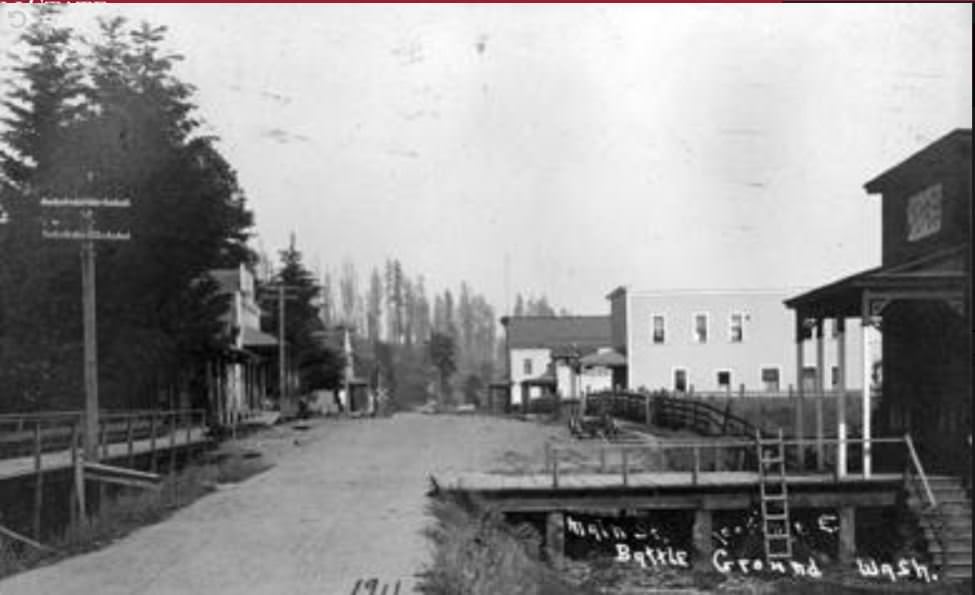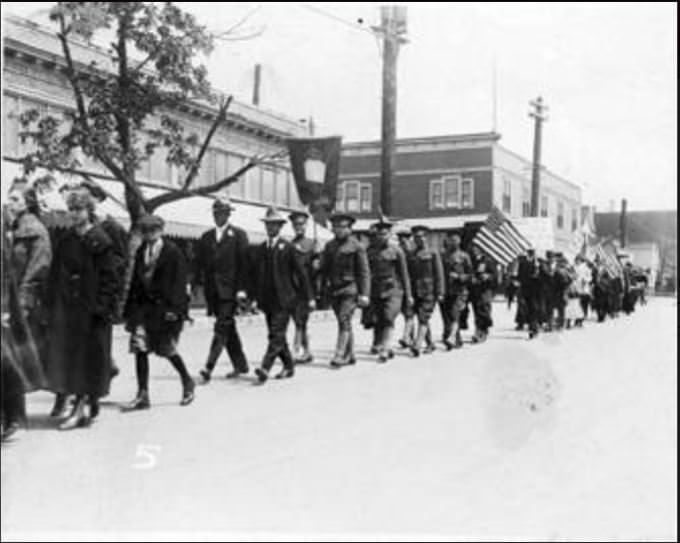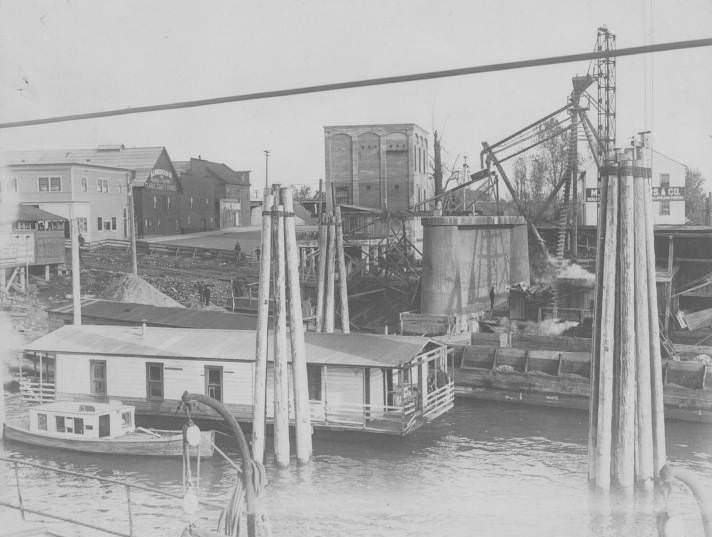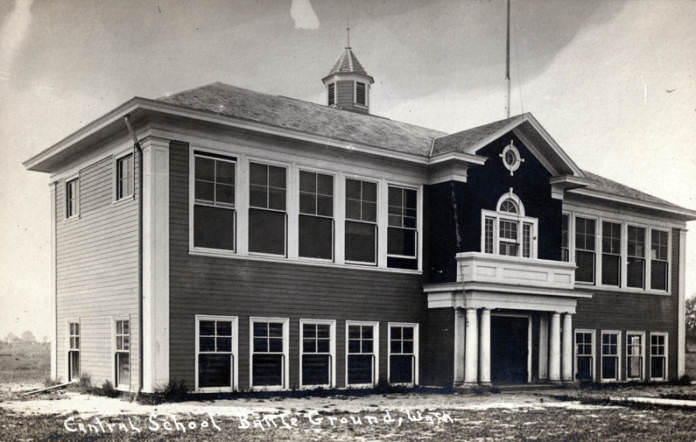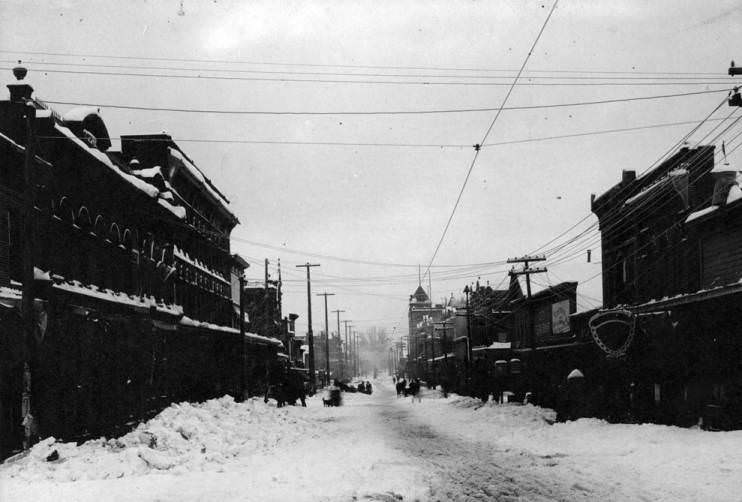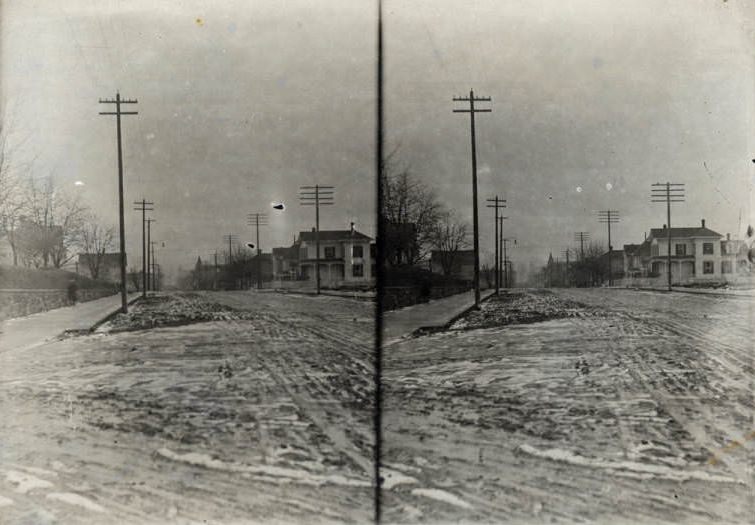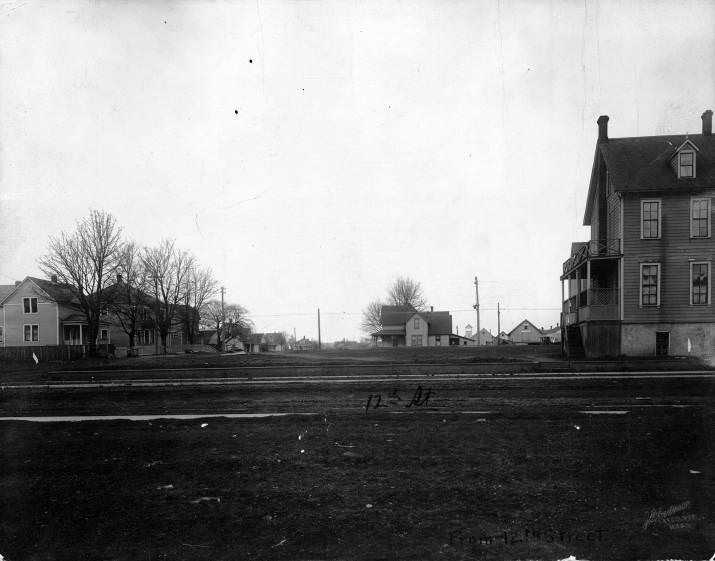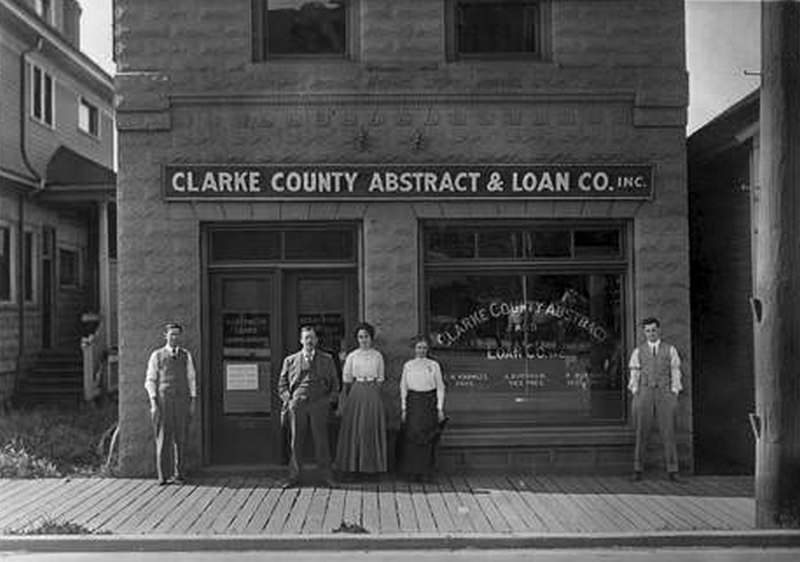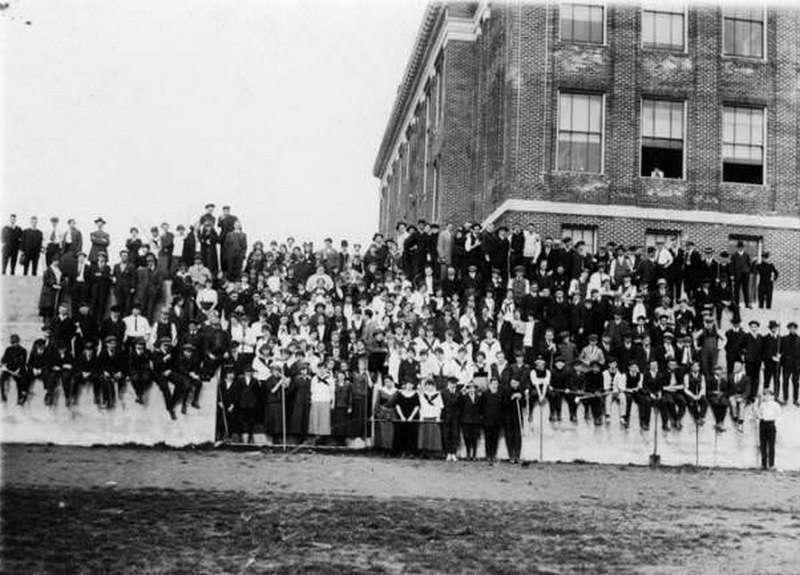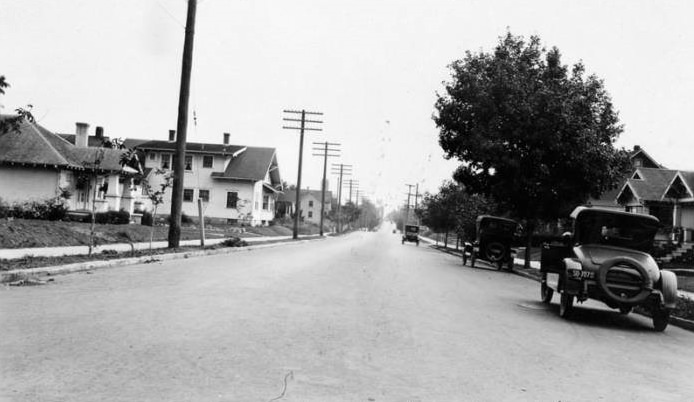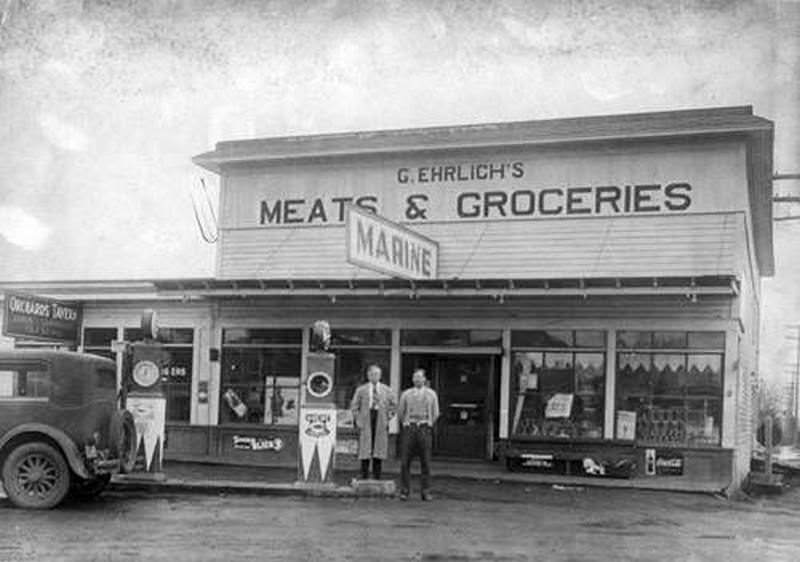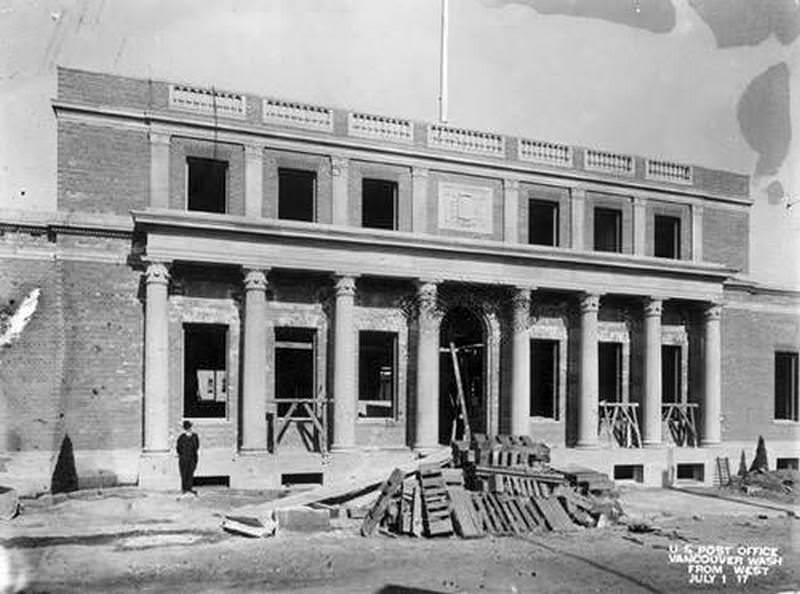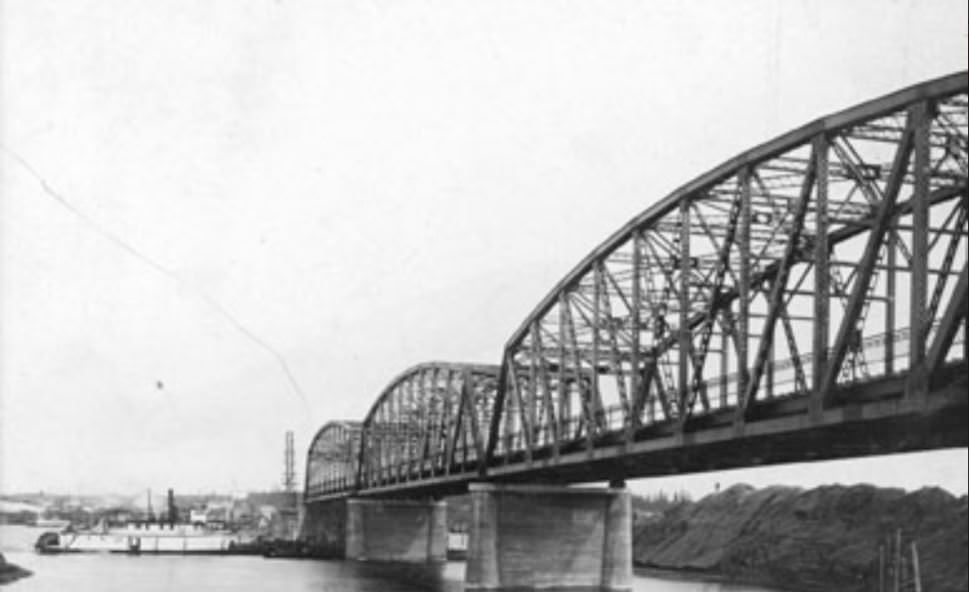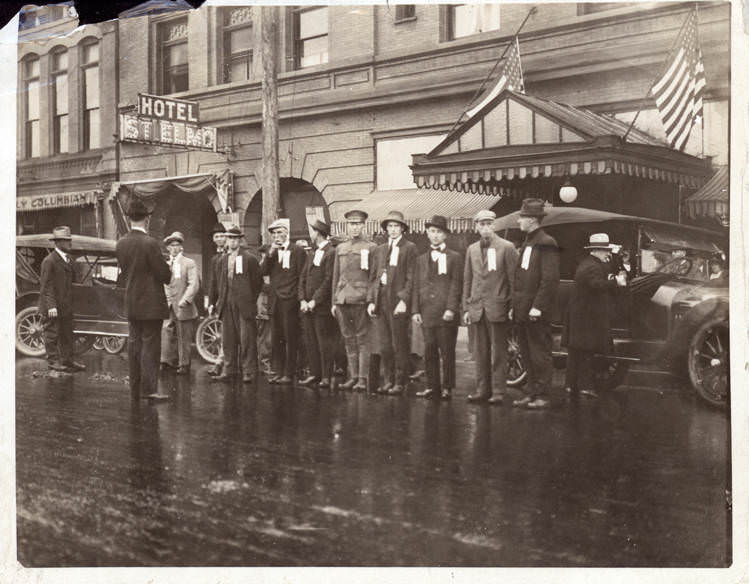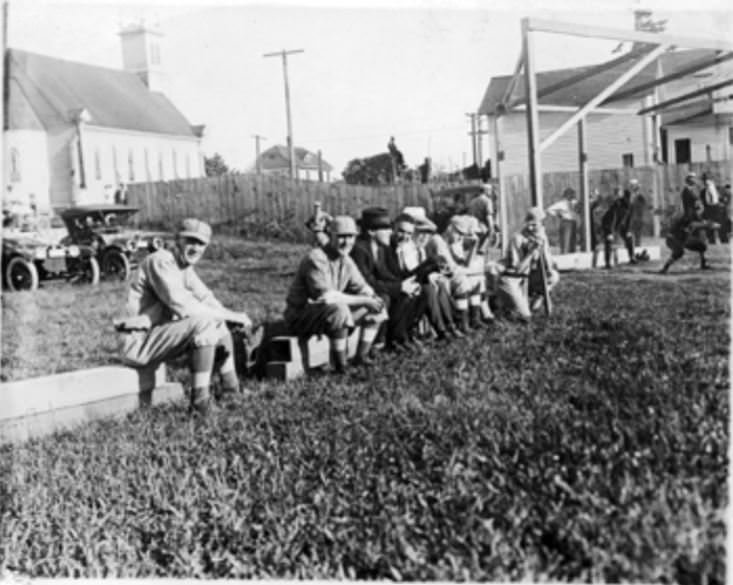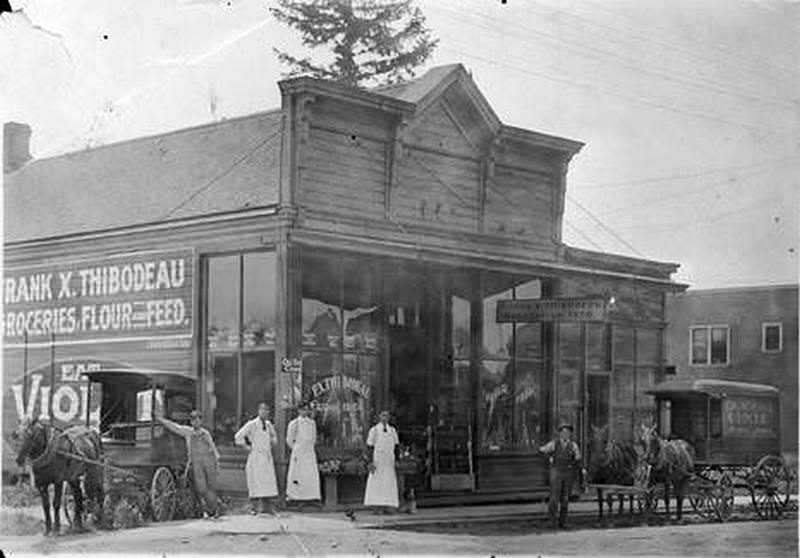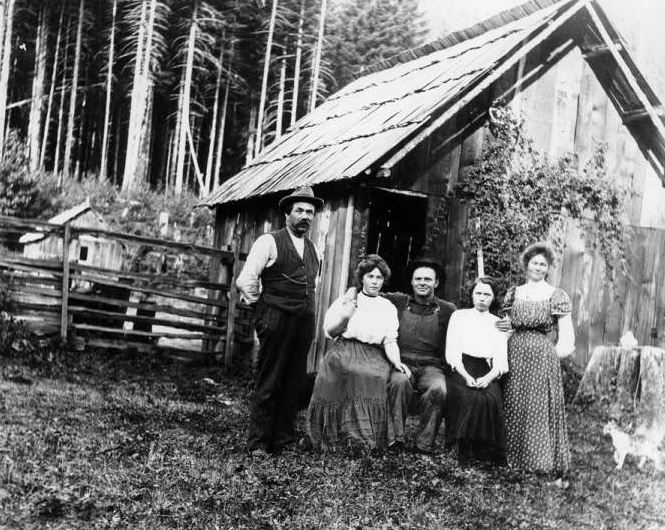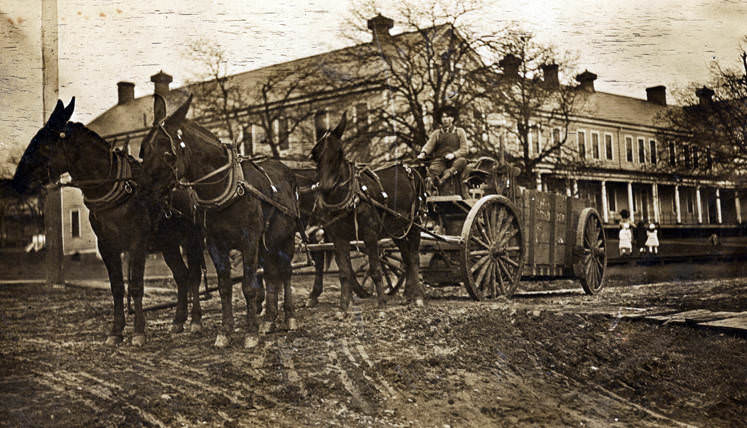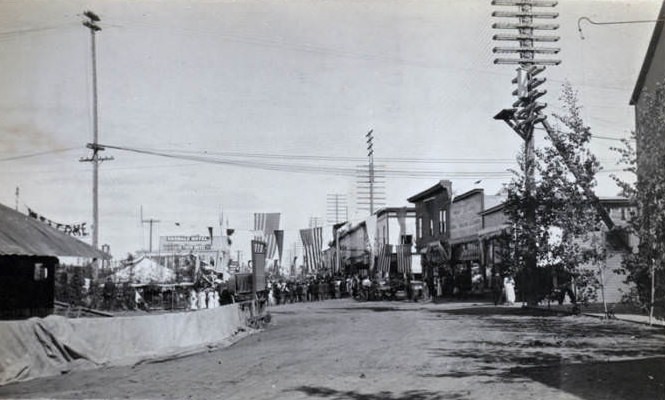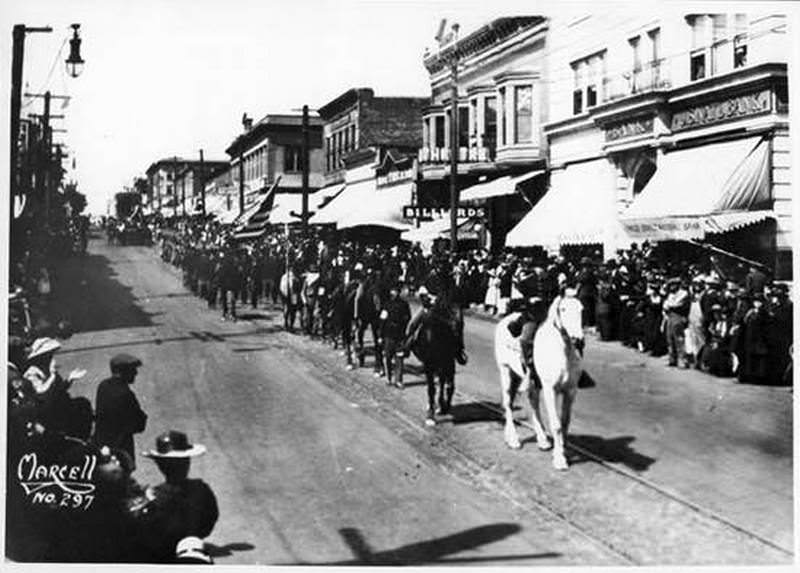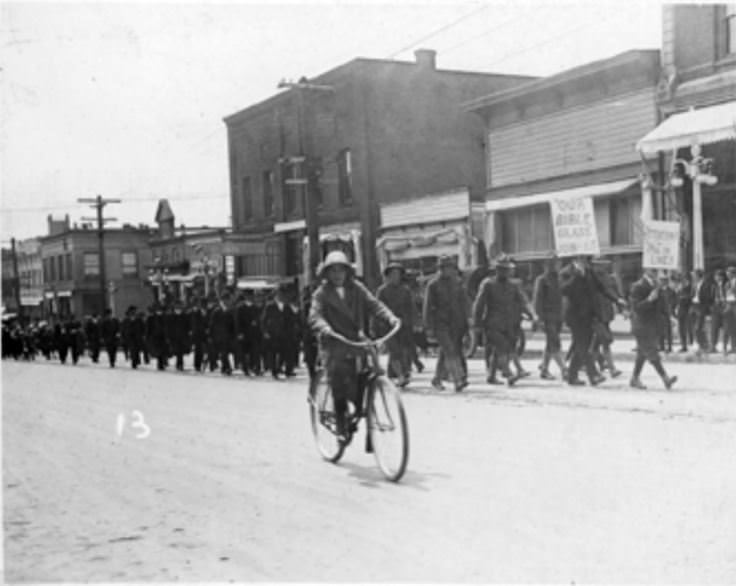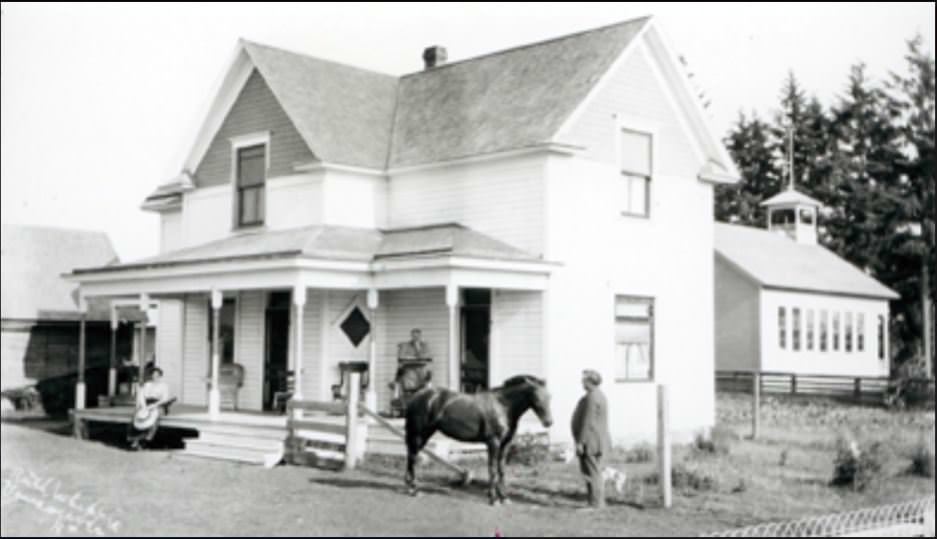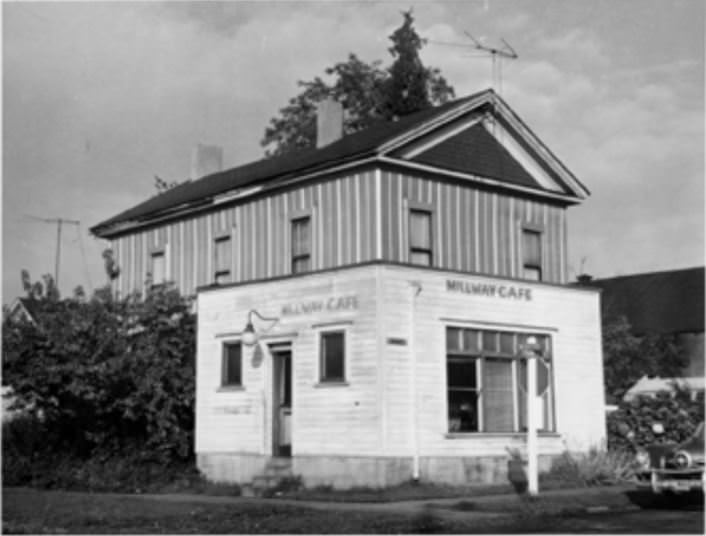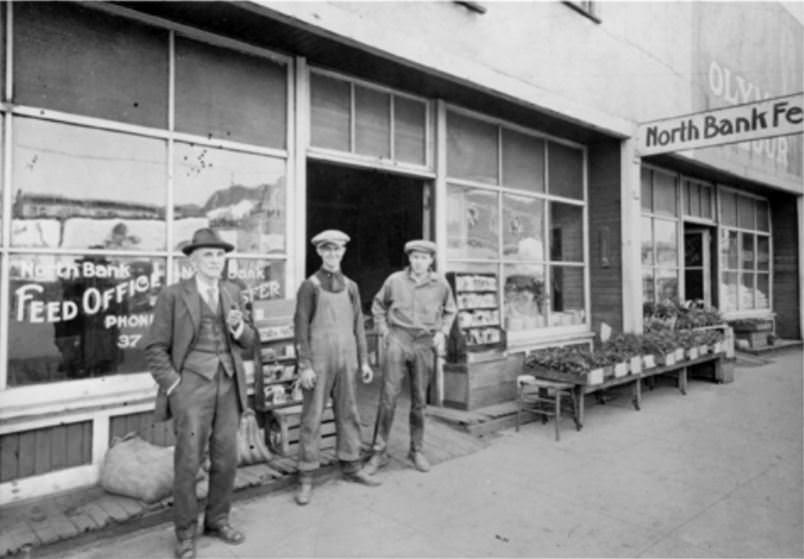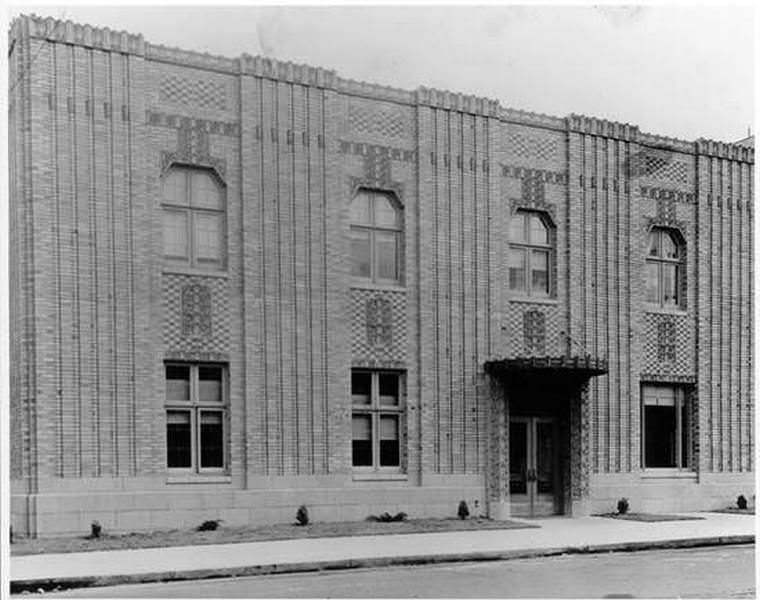Lewis and Clark Centennial Exhibition in Portland in 1905 reinforced the need for a wagon bridge over the Columbia River, which was brought to light due to the boom. Passengers had to endure long waits on the ferry crossings to that event, which were packed to capacity. On March 2, 1912, Vancouver business leaders launched a campaign supporting the wagon bridge, parading through downtown Portland. Standifer Construction Company built two shipyards in Vancouver along the Columbia River for supplying wooden and steel ships to the war effort during World War I. Its first ship, the Kineo, was launched on May 30, 1918, just west of the Interstate Bridge. Shipyards for steel were about a mile to the west, just downstream from the railroad bridge. Both yards continued to build ships until 1921 when the property was sold to the city for a municipal dock.
The Armistice ending World War I was not widely celebrated in Vancouver and Clark County due to the Spanish flu epidemic. Newspapers reported little in the local papers from October 5 to November 15, 1918, except for news of the pandemic. The city shut down, forbidding any public gatherings, and even the churches were closed.
Here are some fabulous photos of Vancouver, WA, in the 1910s.
#1 Logging railroad track, workers laying railroad ties, 1918
#2 Automobiles Waiting for Interstate Bridge Opening, 1917
#3 Floyd Gray, a civilian teamster, is driving the wagon at the Vancouver Barracks, 1910s
#4 Cantonment in Vancouver, 1918
#5 6th and Main Street Vancouver, 1914
#6 The Cokesit afloat on the Columbia River at the Standifer shipyards in Vancouver, Washington, 1919
#7 Fort Vancouver High School, 1913
#8 The Methodist Church over the Gushing Wallpaper Store located at 8th and Washington Street in Vancouver, 1910
#9 Marshall House in Winter, 1912
#10 The New Era Chinese Band marches in a 4th of July parade in Vancouver, 1914
#11 A view down Officer’s Row at the Vancouver Barracks from the east entrance, 1914
#12 Parade Grounds and Soldiers Quarters at Vancouver Barracks, 1918
#13 A. M. Blake Home, 1910
#14 Y.M.C.A. Building Barracks, Vancouver, 1918
#15 Shelter tents pitched for inspection, Vancouver B’ks, Vancouver, 1910
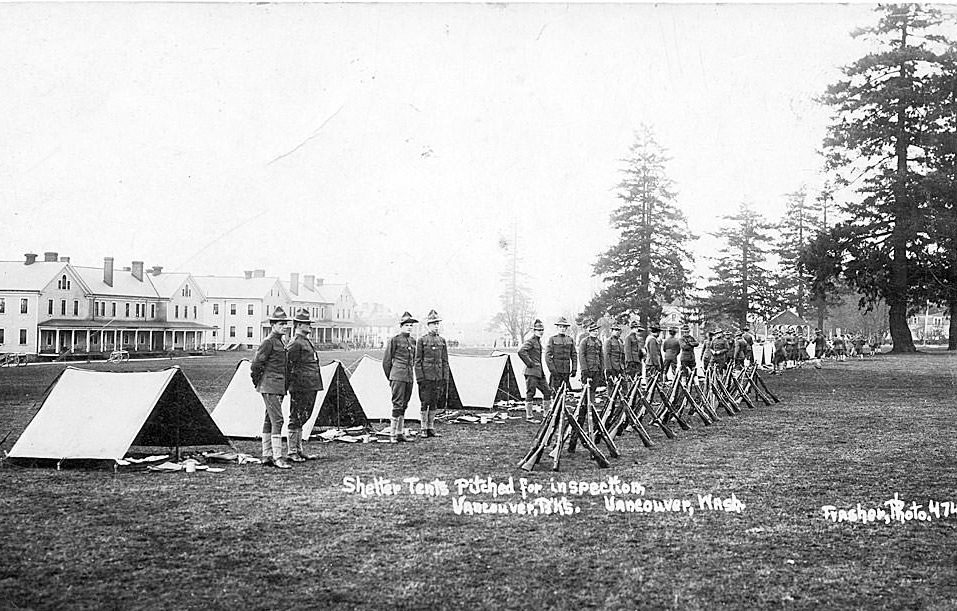
The image shows soldiers in uniform standing in front of a long row of pup tents set up on the parade grounds. Rifles set in teepee formation sit in front of the soldiers. A row of barracks buildings are visible on the left. Two cannons sit in front of the building on the far left. A bandstand is visible among the trees on the right.
#16 Soldiers relaxing, Vancouver Barracks, 1915
#17 Rifle drill, Vancouver Barracks, 1915
#18 Business Section & Pacific Highway Interstate Bridge, Vancouver, 1917
#19 Pie eating contest, Washington’s birthday in Vancouver, 1918
#20 Princess Charlotte leaving Harbour, Vancouver, 1915
#21 Entrance to Barracks, Vancouver, 1915
#22 McKay Restaurant, Vancouver, 1910
#23 Saint James Cathedral, from Columbia and 12 St. Vancouver, 1912
#24 Spokane, Portland & Seattle Ry. roundhouse crew with locomotive 104, Vancouver, 1912
#25 Tichenor’s Camp, near Vancouver, 1910
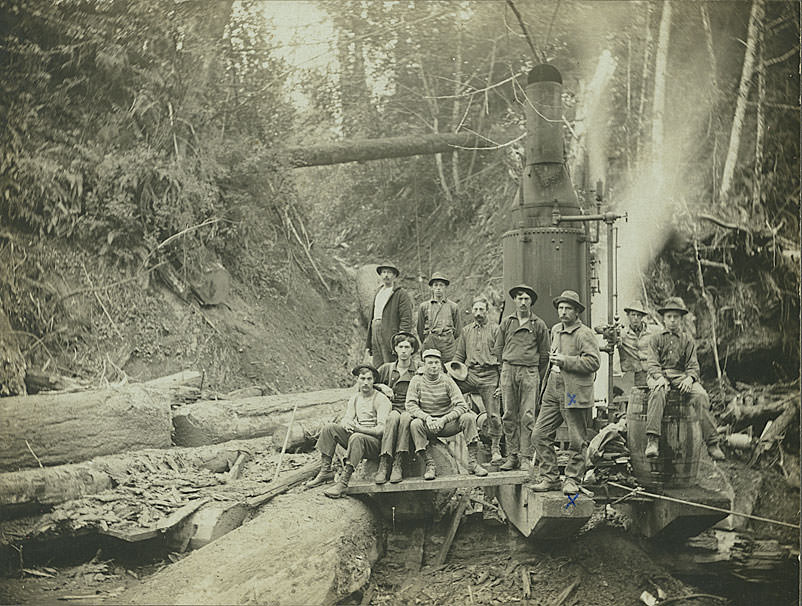
Image shows a group of ten loggers standing and sitting near a donkey engine in a forest. The man standing in the foreground on the left skid of the donkey engine is marked with an "x". A note on the reverse reads "Grandpa [marked with X] at Tichenor's Camp on Murray place where the mill is not far from the old home place.
#26 Nineteenth Annual Convention, Pacific Coast Association of Fire Chiefs, Vancouver, 1911
#27 Male Swimmers near, Vancouver Island, 1913
#28 S.S. Cottage City Wrecked, Vancouver Island, 1911
#29 Group of Men by Tents, Clo-oose, Vancouver, 1913
#30 Nitinat Village at Clo-oose, Vancouver, 1913
#31 Standifer Construction Corp., Steel Plant, Vancouver, 1918
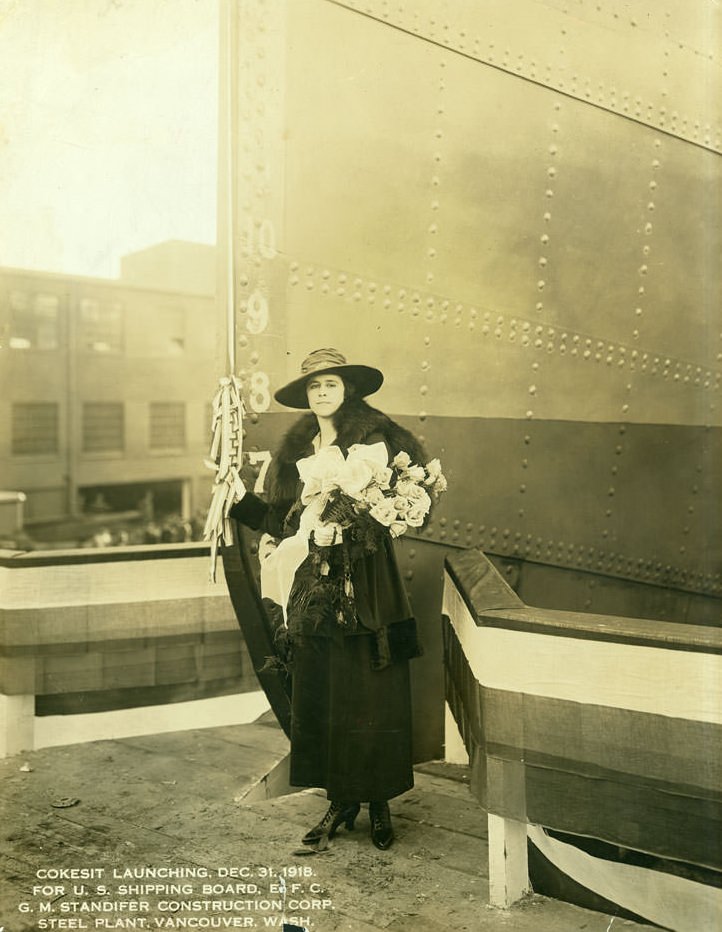
A woman holding a large rose floral bouquet stands on the dock, next to the bow of the S.S. Cokesit, built by the G.M. Standifer Construction Corp for the U.S. Shipping Board Emergency Fleet Corporation, with her hand on a beribboned bottle hanging by the bow, ready to christen the ship.


